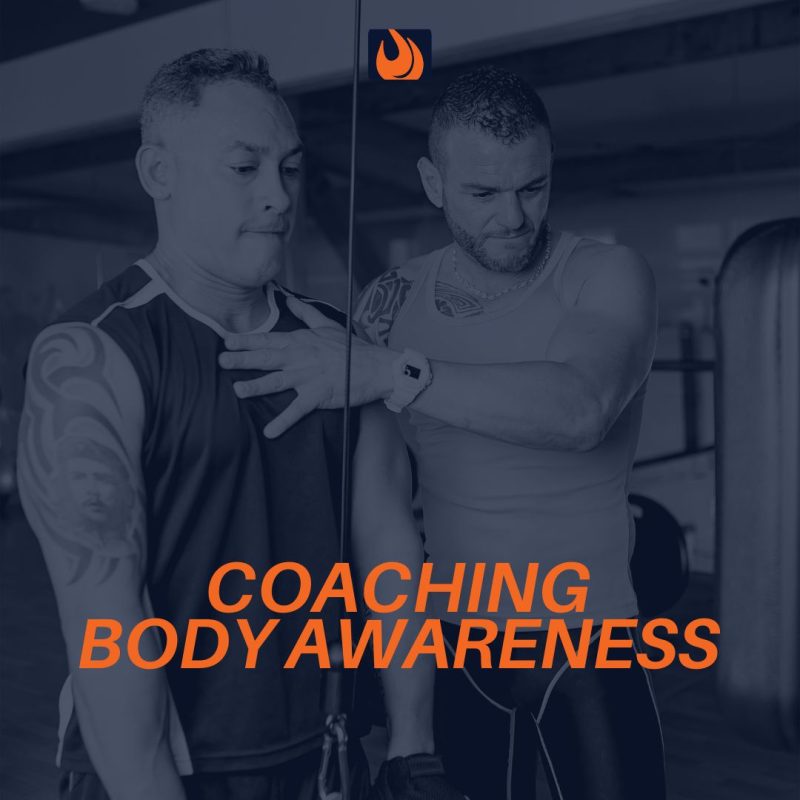
What has helped me to be successful as a coach from the beginning of my 20+ years career as a personal trainer, despite inexperience or even misguided training techniques, is prioritizing and coaching body awareness. Insisting that my clients develop a higher level of body awareness increases both confidence and success.
I am often struck by how disconnected folks are from their own bodies. When I start working with someone new, I pay attention to how well they seem attuned to their body. Here is how to determine how well your clients are connected to their bodies and how to coach body awareness.
What is Body Awareness?
No deep mysteries here—body awareness is one’s ability to sense how active, passive, tense, uncomfortable, or any other number of perceptible sensations a certain part of their body is. For personal trainers, helping clients develop body awareness can be a valuable tool for improving their exercise form, preventing injuries, and achieving their fitness goals.
Body awareness is a complex concept that encompasses a variety of different skills. Some of the key components of body awareness include:
- Proprioception: The ability to sense the position and movement of one’s body in space.
- Interoception: The ability to sense the internal state of one’s body, such as heart rate, breathing, and muscle tension.
- Kinesthetic sense: The ability to coordinate and control one’s body movements.
Why is Body Awareness Important?
Body awareness can help to:
- Improve exercise form: When clients are aware of their body’s position and movement, they can better control their form and avoid injuries.
- Prevent injuries: Body awareness can help clients to recognize and avoid situations that could lead to injury.
- Improve athletic performance: Athletes who have a high level of body awareness are often able to perform better in their sport.
- Increase self-confidence: Body awareness can help clients to feel more confident in their bodies and their abilities.
- Reduce stress: Body awareness can help to reduce stress and anxiety by helping clients to become more attuned to their bodies and their needs.
Tips for Coaching Body Awareness
There are several different ways to coach body awareness. Some of the most effective techniques include:
- Focus on the present moment: Encourage clients to focus on their bodies and their sensations in the present moment. This can be done through mindfulness exercises, such as body scans or meditation.
- Pay attention to breath: Encourage clients to pay attention to their breath, as this can help to anchor them in the present moment and increase their awareness of their bodies.
- Use imagery: Use imagery to help clients visualize their bodies and their movements. This can be a helpful way to improve their body awareness and control.
- Provide feedback: Provide clients with feedback on their body awareness and form. This feedback should be specific and constructive.
- Use props: Use props, such as yoga blocks or foam rollers, to help clients develop their body awareness.
- Employ Progressive Muscle Relaxation: Instructing your client to tense and relax specific muscles will help them to become attuned to specific muscles and more aware of which ones are contracting and which moment.
- Be patient: It takes time to develop body awareness. Be patient with your clients and encourage them to practice regularly.
- Make it fun: Find ways to make body awareness exercises fun and engaging. This will help your clients to stick with it.
- Individualize your approach: Tailor your approach to each client’s individual needs and goals.
- Be mindful of your language: Use positive and encouraging language when coaching body awareness.
By coaching body awareness in your personal training sessions, you can help your clients to develop a stronger connection with their bodies, which will, in turn, improve their overall health and well-being and improve exercise outcomes.







